Girl With A Pearl Earring – Johannes Vermeer.
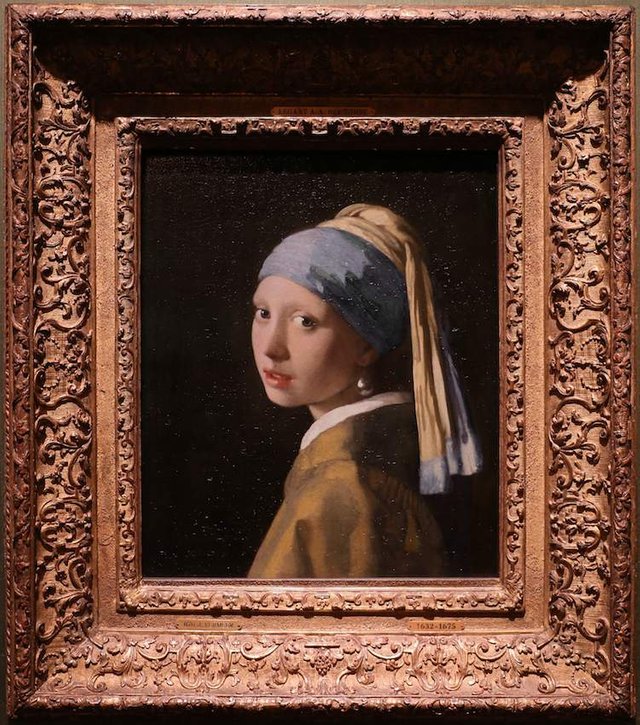
In the 17th century, the Netherlands experienced a period of artistic prosperity known as the Dutch Golden Age. During this era, enlightened artists found inspiration in Northern Renaissance painting techniques, culminating in masterpieces like Girl With a Pearl Earring by Johannes Vermeer.
Known as the “Mona Lisa of the North,” this painting represents the best of Dutch art. Though Girl With a Pearl Earring is shrouded in mystery (much like its Leonardo da Vinci counterpart), it has become one of art history’s most beloved paintings.
Girl with a Pearl Earring in Context
Specializing in genre painting—a type of art that employs scenes of everyday life as its subject—Dutch artist Johannes Vermeer is renowned for his depictions of contemporary Delft, a city in Holland where the artist was born, lived, and died. Specifically, he is known for his his depictions of domestic interiors and portraits of women, like the figure featured in Girl with a Pearl Earring.
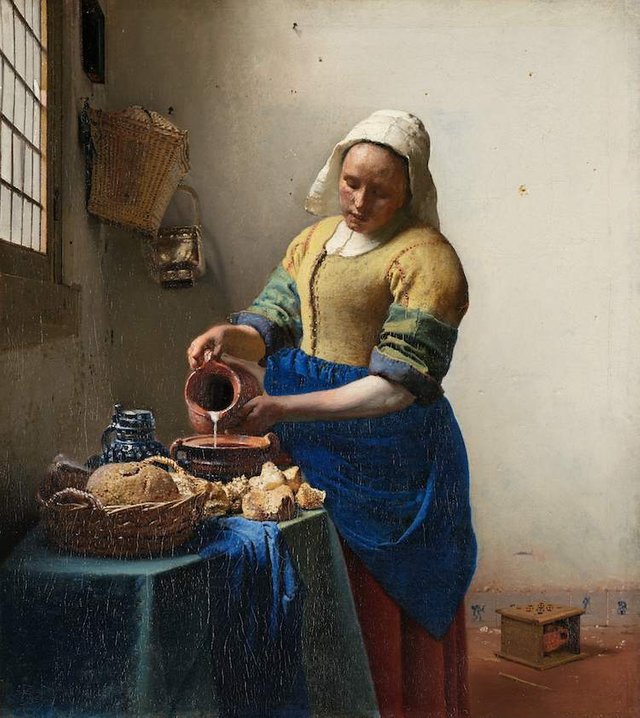
Johannes Vermeer, “The Milkmaid,” ca. 1660 (Photo: Google Arts & Culture via Wiki Art Public Domain)
Vermeer painted Girl with a Pearl Earring around 1665. It is one of just 35 paintings attributed to the painter, who saw moderate success during his lifetime. Along with another genre painting (titled The Milkmaid), Girl with a Pearl Earring is Vermeer’s most well-known work of art. However, it did not attain international fame at its time of completion. That came about at the end of the 20th century, when it was featured in a special exhibition, Johannes Vermeer, at the National Gallery of Art in Washington, D.C.
“Vermeer somehow manages to disappear when you look at a work like Girl with a Pearl Earring,” critic Michael Kimmelman wrote in his exhibition review, “Timeless Contemplation of the Ordinary” in 1995. “And what is left are her extraordinary eyes, turned directly to meet your gaze across time.”
Subject Matter
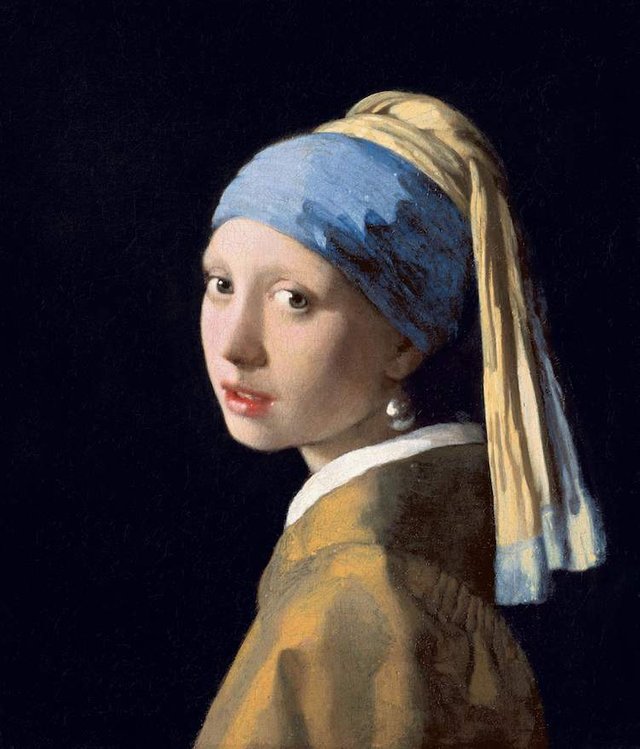
Johannes Vermeer, “Girl with a Pearl Earring,” ca. 1665 (Photo: Mauritshuitsvia Wiki Art Public Domain)
Girl with a Pearl Earring portrays a young woman sitting before a dark backdrop. Though seemingly inconsequential, this stark and shallow background beautifully contrasts the figure’s cream-colored skin and translucent eyes, which are fixed on the viewer. In addition to an exquisite blue and yellow turban, she dons a large, tear-shaped pearl earring.
While, on the surface, this depiction seems to have the classic characteristics of a portrait, it is actually known as a tronie. Popular during the Dutch Golden Age, a tronie is a painting of an individual intended as a study. Often, artists opted to portray these figures in “exotic” garments, as rendering opulent fabric allowed them to show off their advanced painting techniques.
A true tronie, Girl with a Pearl Earring does not depict a specific person. Instead, it shows an anonymous girl dressed in opulent clothing who, “like a vision emanating from the darkness,” art historians Arthur K. Wheelock and Ben Broos explain in the Johannes Vermeer catalogue, “belongs to no specific time or place.”
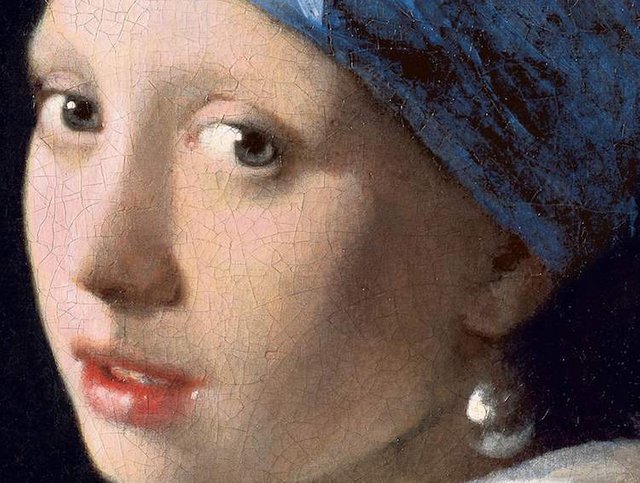
Painting Techniques
Girl with a Pearl Earring showcases Vermeer’s advanced painting techniques—specifically, his approach to light, color, and brushwork.
LIGHT

Vermeer is known for his ability to create contours and forms using light rather than line. This distinctive approach to modeling is particularly evident in the figure’s face, which Vermeer rendered in planes of light and shadow. To achieve this aesthetic, Vermeer followed a meticulous four-step technique popular with 17th-century artists.
First, he would “invent,” or create an initial drawing on the canvas. Then, he crafted a monochromatic underpainting—a technique known as “dead-coloring.” Next, he added color. And, finally, in order to make the piece exceptionally luminous, he would apply a thin layer of glaze to certain parts of the painting. A recent restoration has revealed that he glazed two areas of Girl with a Pearl Earring: the blue section of her turban and the entire background (which, originally, would have been an opalescent green).
COLOR
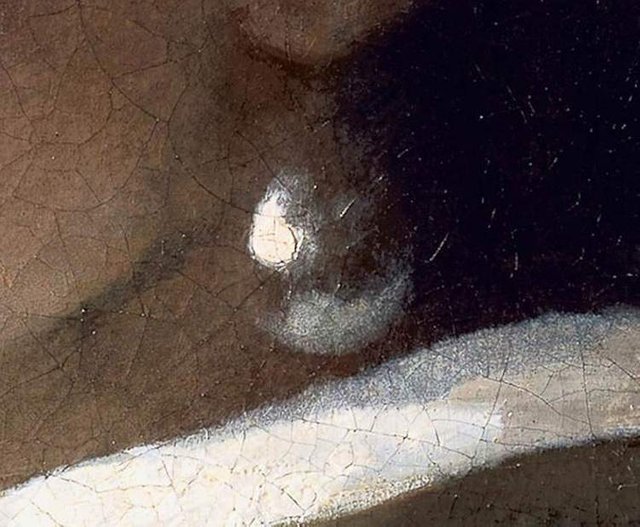
In addition to the artist’s unique treatment of light, Girl with a Pearl Earring also illustrates his love of color—specially, ultramarine blue. This paint is made out of pigment derived from lazurite, a mineral found in the semiprecious stone lapis lazuli.
Vermeer often incorporated this expensive hue into his paintings, reserving it for portrayals of curtains, upholstery, and, in Girl with a Pearl Earring, clothing. While it’s most prominent in the band of her turban, it’s also evident in the shadows of the yellow fabric, illustrating Vermeer’s “liberal, almost unorthodox, use of this costly pigment.”
To appreciate Vermeer’s impressive brushwork, one only needs to look at one detail in Girl with a Pearl Earring: the earring itself. From a distance, this large piece of jewelry appears to be rendered in exquisite detail. Upon closer inspection, however, it is evident that it is composed of just a few simple strokes that astoundingly suggest the form and luster of a pearl.
Today, Girl with a Pearl Earring remains one of the most famous paintings in the world. In addition to its fascinating context and appealing aesthetics, the piece is celebrated for the mystery that surrounds it.
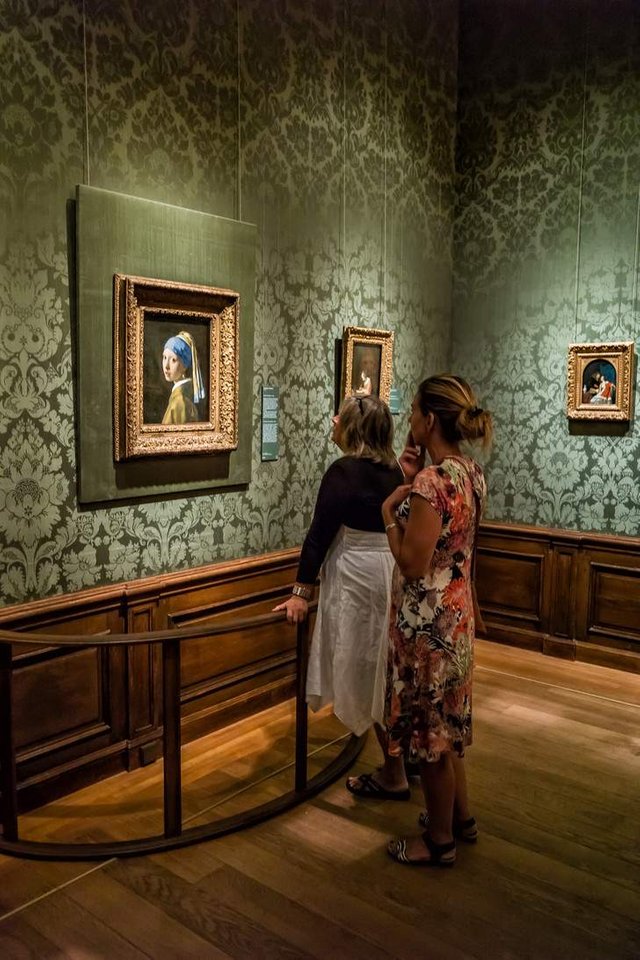
“When you think about the Mona Lisa, she is also looking at us, but she isn’t engaging – she’s sitting back in the painting, self-contained,” Tracy Chevalier, the author of the New York Times bestselling historical novel, Girl with a Pearl Earring, points out. “Whereas Girl with a Pearl Earring is right there – there is nothing between her and us. She has this magical quality of being incredibly open and yet mysterious at the same time – and that is what makes her so appealing.”
(https://mymodernmet.com/vermeer-the-girl-with-the-pearl-earring/)
Posted using Partiko Android
Warning! This user is on my black list, likely as a known plagiarist, spammer or ID thief. Please be cautious with this post!
If you believe this is an error, please chat with us in the #cheetah-appeals channel in our discord.
Downvoting a post can decrease pending rewards and make it less visible. Common reasons:
Submit
Congratulations @mukarrabin! You received a personal award!
You can view your badges on your Steem Board and compare to others on the Steem Ranking
Vote for @Steemitboard as a witness to get one more award and increased upvotes!
Downvoting a post can decrease pending rewards and make it less visible. Common reasons:
Submit